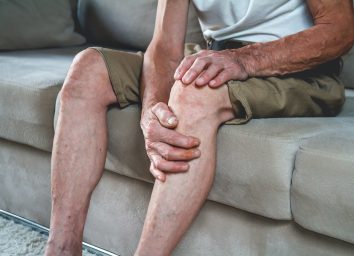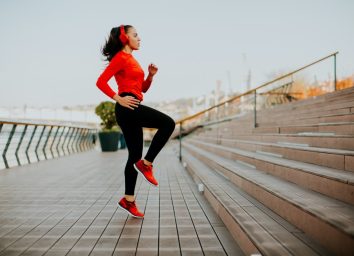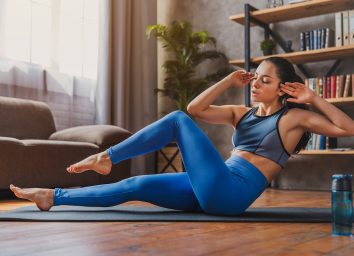Over 50? Here’s a Major Sign You Need to Exercise More Starting Now
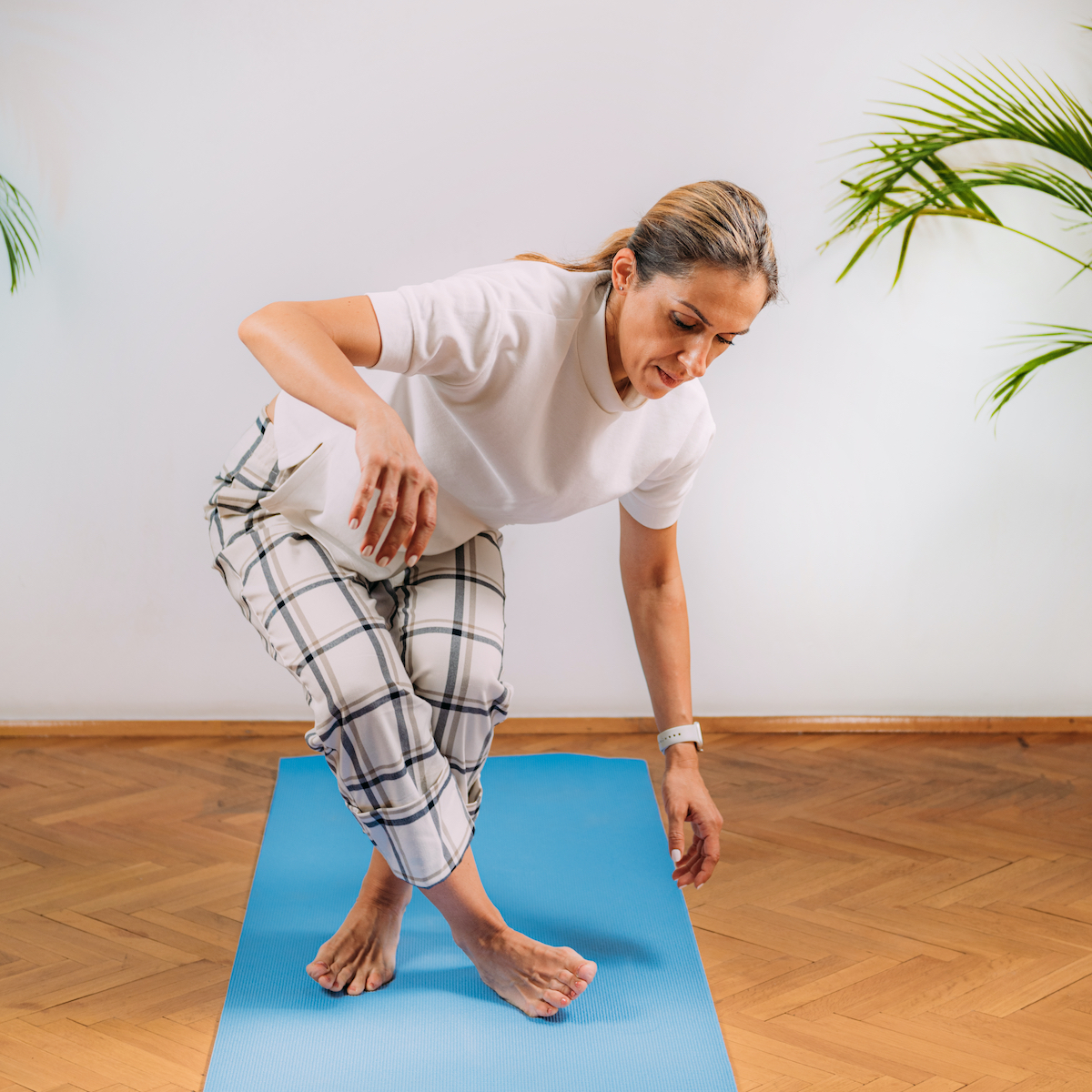
Now more than ever, it’s important for older adults over the age of 50 to keep fit. According to the University of Michigan’s 2021 National Poll on Healthy Aging report, more than a third of Americans aged between 50 and 80 saw their physical activity levels drop considerably during the COVID-19 pandemic. Moreover, more than a quarter of surveyed older adults admit they are in worse physical condition today from a muscular, endurance, and flexibility perspective than a year ago. Almost unbelievably, 21% say they’ve barely been accomplishing just 30 minutes of moderate activity (such as walking) per week.
The good news is that it’s never too late to make up for lost time. “As life gets closer to normal, especially for the large percentage of older adults who are fully vaccinated against COVID-19, health care providers and loved ones should encourage more interactions that involve safe physical activity,” comments poll director Preeti Malani, M.D., a Michigan Medicine infectious disease physician. “We need to make up for lost time and get older adults on track, or back on track, with the kinds of movement and strengthening that can safeguard their independence by reducing their risk of falls or of major fall-related injuries.”
If you’re an older adult and find yourself wondering if your usual exercise or physical activity routine needs a major upgrade, there’s a simple way to get your answer. Perfected by Brazilian researchers at the Clinimex Exercise Medicine Clinic in Rio de Janeiro—and described in the European Journal of Cardiovascular Prevention—this secret trick is a quick and easy way to assess your fitness level. If you can’t do it, consider it a major red flag that you need to up your fitness game stat. Read on to learn more, and for more great exercise advice, don’t miss the Secret Side Effects of Lifting Weights for the First Time, Says Science.
The Sitting-Rising Test (SRT)
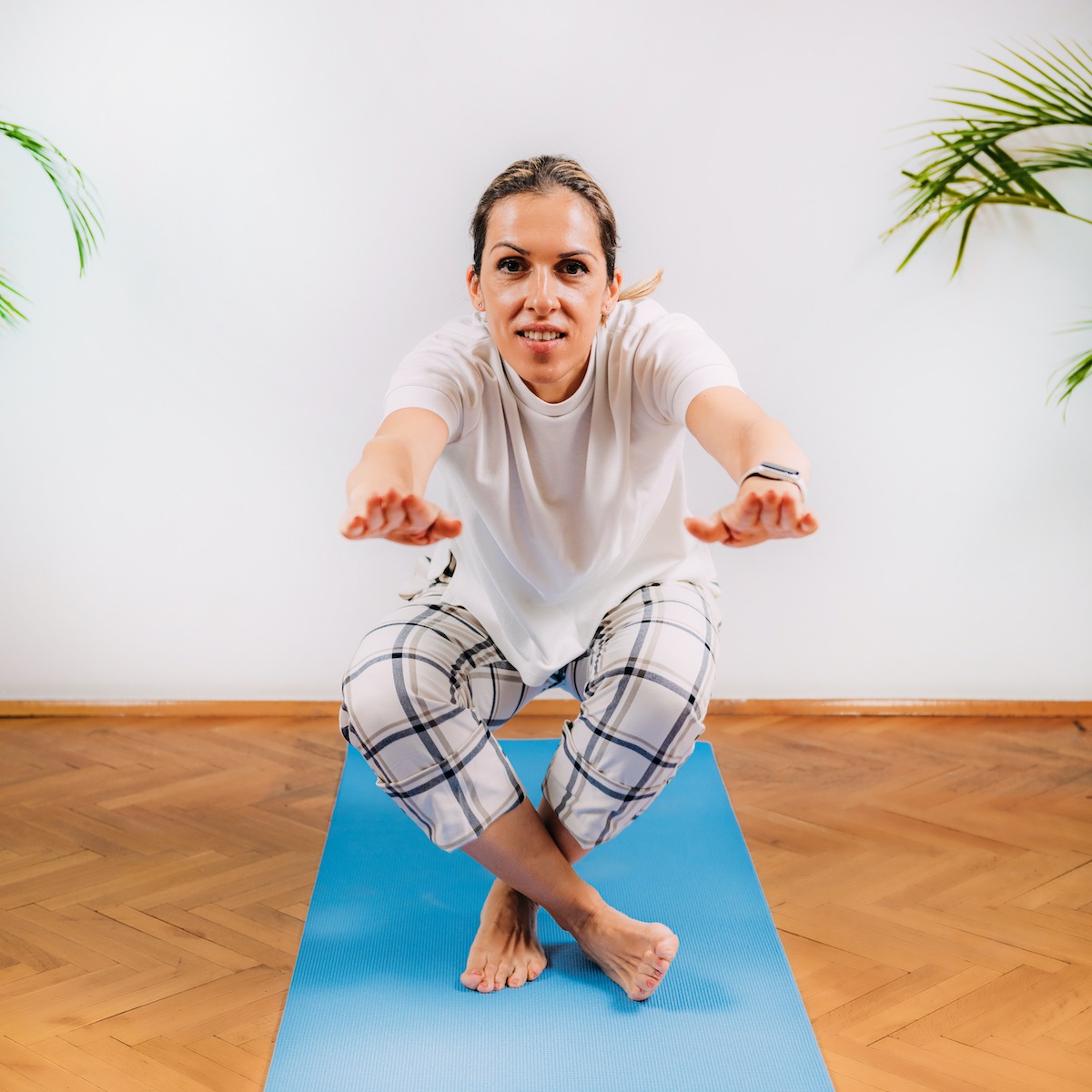
Can you sit down on the floor and then pick yourself back up—all without using your hands, knees, or forearms? This straightforward assessment of musculoskeletal fitness has been shown to be a remarkably accurate indicator of both personal fitness and all-cause mortality risk.
In other words, if you can perform these actions without relying on much support it’s a clear sign that you’re in passable shape. Alternatively, if it’s tough to sit down on the floor and get back up without extra support, that’s a sign it’s time to exercise more.
Researchers asked over 2,000 male and female adults between the ages of 51 and 80 years old to perform this action a few times and then assigned a score between 0 and 10 depending on how easily each person could sit down and stand back up. After tracking participants for the following 6.3 years, study authors discovered that those in the lowest fitness category (scores ranging between 0 and 3) were five to six times more likely to pass away during the observation period in comparison to older adults who could sit on the floor and stand back up with ease (scores 8 to 10).
Any score below 8 was associated with a two times greater chance of dying from any cause. “Even more relevant,” study authors write, “is the fact that a 1-point increment in the sitting-rising score was related to a 21% reduction in mortality.”
The research team was sure to account for other lifestyle factors that may have influenced these results, such as age, gender, and BMI. Even then, they say the findings remained consistent. And for more great exercises you can do, see these 5-Minute Exercises for a Flatter Stomach Fast.
Longevity & Better Living
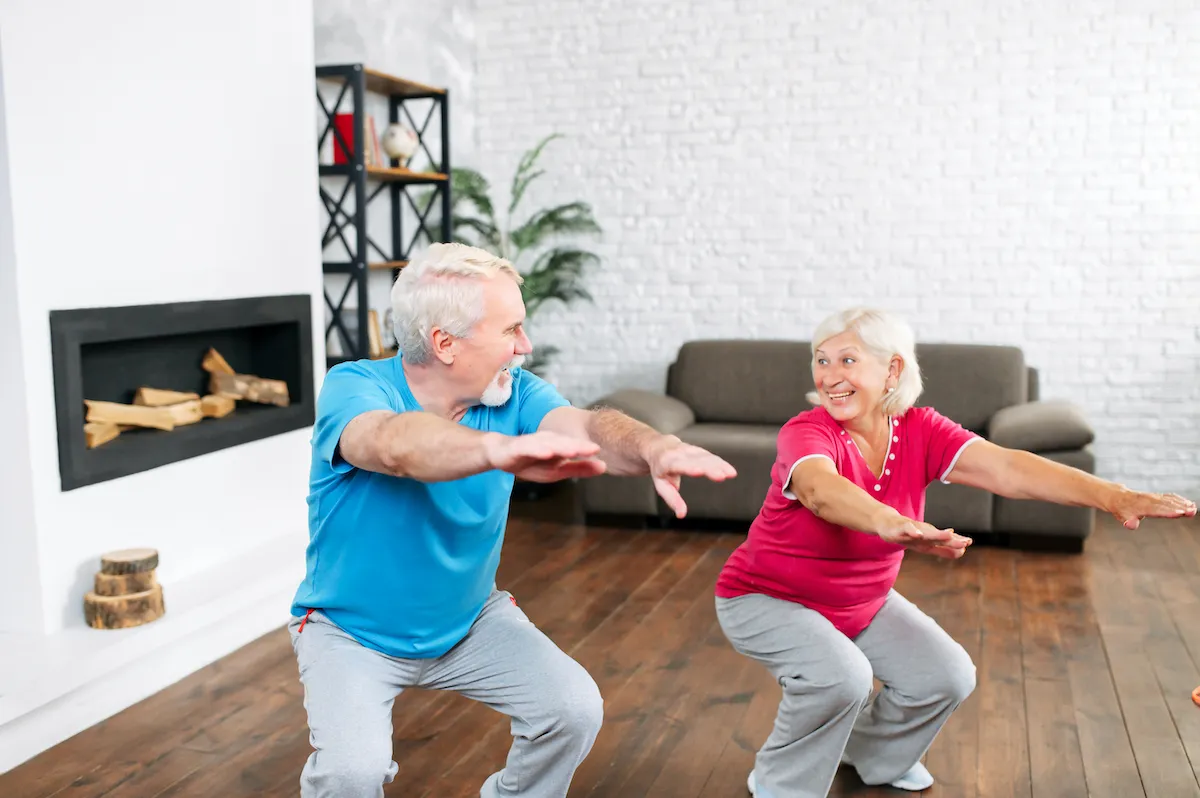
A longer life is more than enough reason to work on balance, flexibility, and muscular strength. Additionally, the study authors stress that a high score on the SRT “reflects the capacity to successfully perform a wide range of activities of daily living, such as bending over to pick up a newspaper or a pair of glasses from under a table.”
So, the SRT is also a very useful way for adults over 50 to quickly gauge where they’re at in terms of maintaining an independent and meaningful lifestyle. “It is well known that aerobic fitness is strongly related to survival, but our study also shows that maintaining high levels of body flexibility, muscle strength, power-to-bodyweight ratio and coordination are not only good for performing daily activities but have a favorable influence on life expectancy,” explains lead study author Dr. Claudio Gil Araújo.
SRT Specifics

Before starting, each participant was instructed by researchers: “Without worrying about the speed of movement, try to sit and then to rise from the floor, using the minimum support that you believe is needed.”
Participants didn’t have any shoes or socks on, and wore loose fitting, unrestrictive clothes.
Each movement (sitting, standing) was scored on a scale of 0-5. When combined, the two grades formed the final score ranging between 0-10. A single point was deducted for each form of support used. Researchers looked out for five distinct “support forms”: one hand, one forearm, one knee, the lateral side of one leg, and placing one hand on the knee or thigh while sitting/rising.
Importantly, it was also OK for subjects to cross their legs while performing the actions (as long as they didn’t use the side of their feet for support while doing so).
If the researcher noticed some shakiness or a momentary loss of balance while sitting or rising, half a point was deducted. However, the test was performed a few times for each person, and researchers offered some advice to help participants score higher. The highest score achieved by each person was ultimately used for the final calculations.
Time to squat
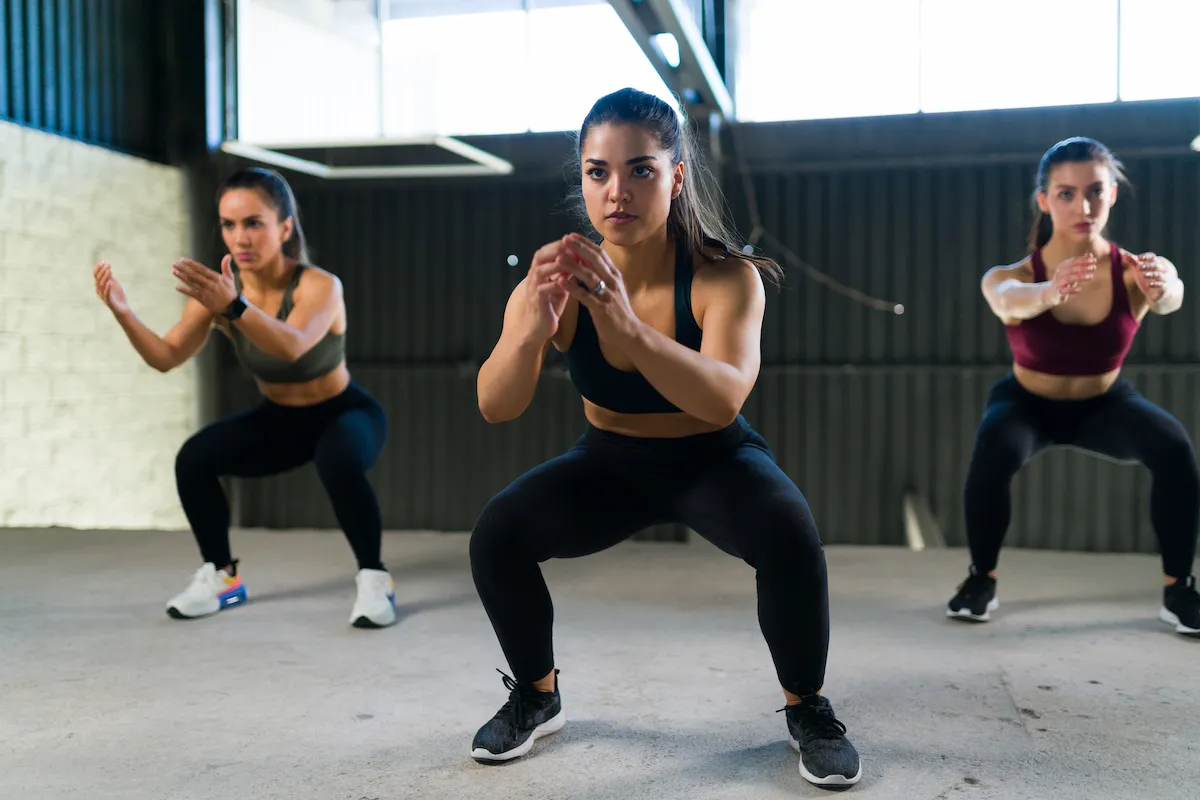
While it will be difficult for older adults at home to recreate this exact scoring system, the general test and message are clear. Try sitting down and getting back using as little support as necessary. If you can get all that done with no support at all, or just one hand/knee/forearm, it’s a strong sign that you’re in good shape. If it takes a bit more support, it’s time to consider more squats, cardio, and exercise in general.
“If a middle-aged or older man or woman can sit and rise from the floor using just one hand—or even better without the help of a hand—they are not only in the higher quartile of musculo-skeletal fitness but their survival prognosis is probably better than that of those unable to do so,” Dr Araújo concludes. And for some exercises to avoid as you get older, don’t miss this list of The Worst Exercises You Can Do After 60.
